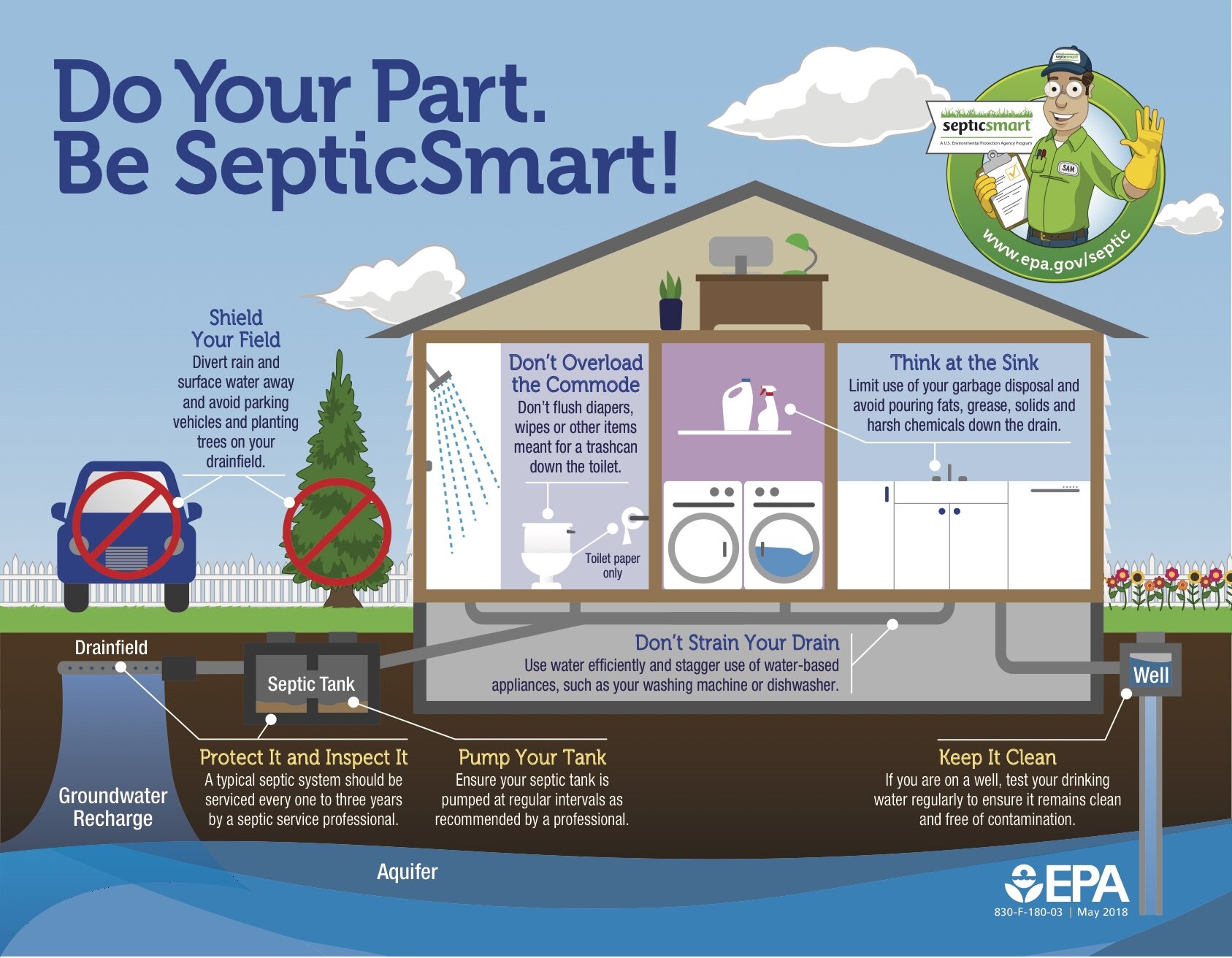September 9th: Maintaining your Septic System
Septic systems are wastewater treatment systems that collect, treat and disperse wastewater. They are designed to break down and neutralize wastewater contaminants before they enter groundwater or surface water. Poorly maintained septic systems can release wastewater contaminants such as harmful bacteria that cause illness and excess nitrogen and phosphorus that feed unhealthy algal blooms.
The typical septic system consists of:
A septic tank which separates, stores and begins to treat solid wastes
A distribution system, which is generally a series of perforated drainpipes
A drain field, or soil absorption system
The tank holds the wastewater long enough to allow solids to settle out and the fats, oils and grease to float to the top. Effluent flows out to the drainfield for further treatment in the soil. Check out this animated video of how a septic system works.
Regularly maintaining your individual septic system is all part of being a good watershed steward. Here are some simple things you can do to maintain your septic system and protect our watershed.
Regular maintenance:
Ensure that your septic system is maintained and functioning by getting it pumped every 2-3 years. Septic pumpers can identify issues and needed upgrades. This helps reduce the input of nutrients and bacteria into streams in our watershed.
Clean the effluent filter every 6 months. If your septic does not have an effluent filter, consider retrofitting. For more information on the value of an effluent filter, watch this video from MSU Extension.
What goes down the drain
You shouldn’t pour cooking grease, oil and other solids like coffee grounds down the sink or toilet. It’s important to reduce the flow of floatable materials like fats, oils and grease into your septic tank. Instead of in the sink, you should put grease in a container to harden before discarding in the trash. Coffee grounds have a variety of reuses. You can dry them out and light them outside to use as a mosquito repellent, or set them out in your house to absorb odor. They also make great compost!
Avoid the use of a garbage disposal
Eliminating the use of a garbage disposal can reduce the amount of grease and solids entering the septic tank and possibly clogging the drainfield. A garbage disposal grinds up kitchen scraps, suspends them in water, and sends the mixture to the septic tank. Once in the septic tank, some of the materials are broken down by bacterial action, but most of the grindings have to be pumped out of the tank. Using a garbage disposal frequently can significantly increase the accumulation of sludge and scum in your septic tank, resulting in the need for more frequent pumping.
Take care of your drainfield!
Avoid planting water loving shrubs and plants and trees with deep root systems near or on top of the drain field, as the roots can damage and clog the drainage pipes and affect moisture levels. Plant only grass over your septic system. Mow, but do not fertilize this area! Keep all vehicles, bikes, snowmobiles, etc. off the tank, pipes and drainage area. Heavy objects can compact the soil in your drainfield and damage the pipes, tank or other components of the system. The lawn mower is okay though!
Resources:
Gallatin Watershed Sourcebook: A Resident’s Guide. Thank you to the Gallatin Watershed Sourcebook for providing resources for this post.
Gallatin Local Water Quality District Septic and Wastewater Treatment Resources

